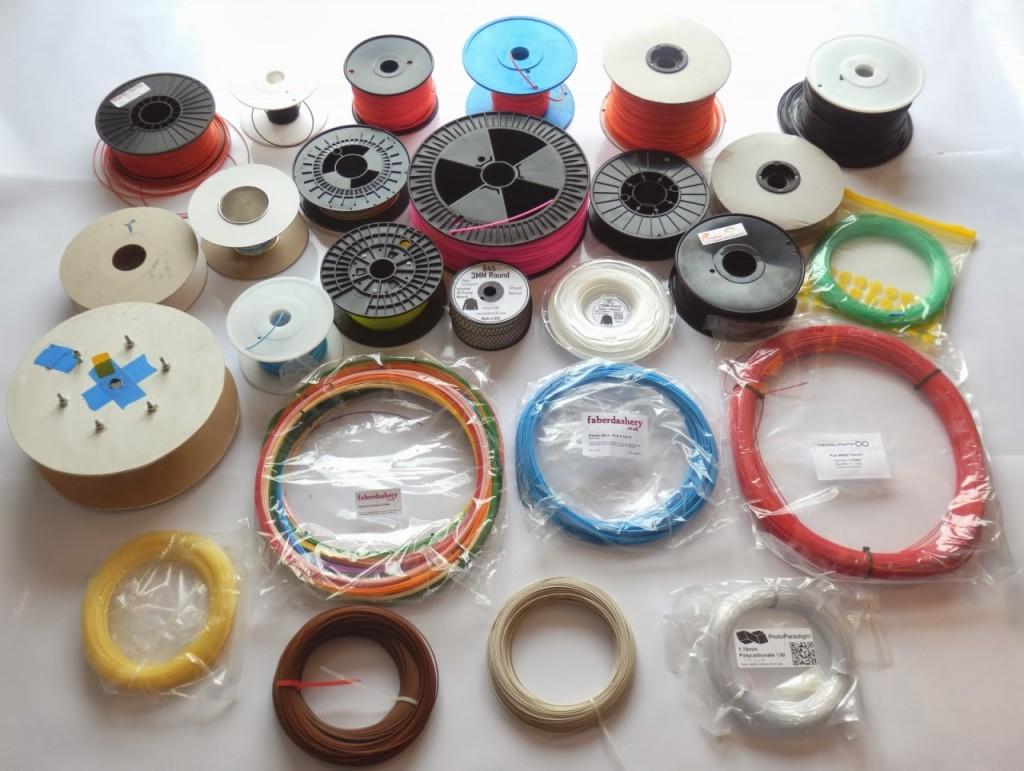
If you are an experienced 3D printing enthusiast, then you know that the spool is as important to the filament, as our veins are to the blood that flows through your body. You also know that spools of filament are probably one of the most aggravating aspects of the 3D printing process. Every spool from every filament manufacturer seems to be different in one way or another. It’s almost ridiculous how it seems as though no filament manufacturers really seem to be making an effort to create a spool that fits all 3D printers. You would think that a standard size would benefit almost all those companies who manufacture filament.
Thanks to one man, who many of you are already familiar with, Richard Horne, aka RichRap, in conjunction with The 3D Printing Association, and many other individuals within the 3D printing and RepRap communities, there may be some hope on the horizon. The 3D Printing Filament Spool Standard looks to create a standard filament spool that various manufacturers can adopt when packaging their filament for shipment.
So, what is so special, and what are the features of this new spool standard? Probably the most interesting property of the spool would be the fact that they recommend it being manufactured with a material called BioFoam. This PLA based material is extremely strong and very light-weight. The way it can be used to create spools is through a process where pellets of the biofoam material are fed into a metal mold. Once the mold is filled, high pressure steam is forced upon the material, causing it to melt, expand, and then hold its form once cooled. The final product is approximately as strong as a spool which has been 3D printed using an infill of 20%. It is completely recyclable, biodegradable, and has the the ability to be manufactured anywhere in the world.
On top of this, another interesting and very helpful feature is the spool’s ability to be broken down into two separate halves which easily can then be stacked upon one another, saving precious space in the shipping and storage process.
Horne hopes that he can convince some of the larger filament manufacturers to come on board with this standard. A spool standard would allow anyone with any filament-driven FFF/FDM 3D printer (other than those that require proprietary cartridges) to purchase filament from any manufacturer that uses this standard, and know with certainty that it will fit their 3D printer. Of course it will also require 3D printer manufacturers to keep the standard in mind when designing their printers and especially the filament holders on these printers. There will obviously be some major hurdles to overcome, including the fact that many manufacturers prefer that their customers purchase their own brand of filament, so that they can capitalize on future sales. This could be a major deterrent for many companies, but with enough of them jumping on board, it may leave many of them with no choice but to take part in the spool standard themselves.
“What almost all users don’t want is a feeling of being locked-in to any 3D print material supplier,” Horne tells 3DPrint.com.
This is very true, and hopefully manufacturers of 3D printers and filament realize this. We will certainly be keeping an eye out for the first company to jump on board with this standard, and you can mark our word that they will have a featured article written about them on 3DPrint.com. We are full supporters of the 3D printing filament spool standard ourselves.
The complete specifications for the standard, including sizes, dimensions, and more can be downloaded via The 3D Printing Association website. What do you think about this standard? Do you think it will take hold? Discuss in the 3D Printing Filament Spool Standard forum thread on 3DPB.com. Check out the video of Horne giving a bit of an update on the spool standard below.